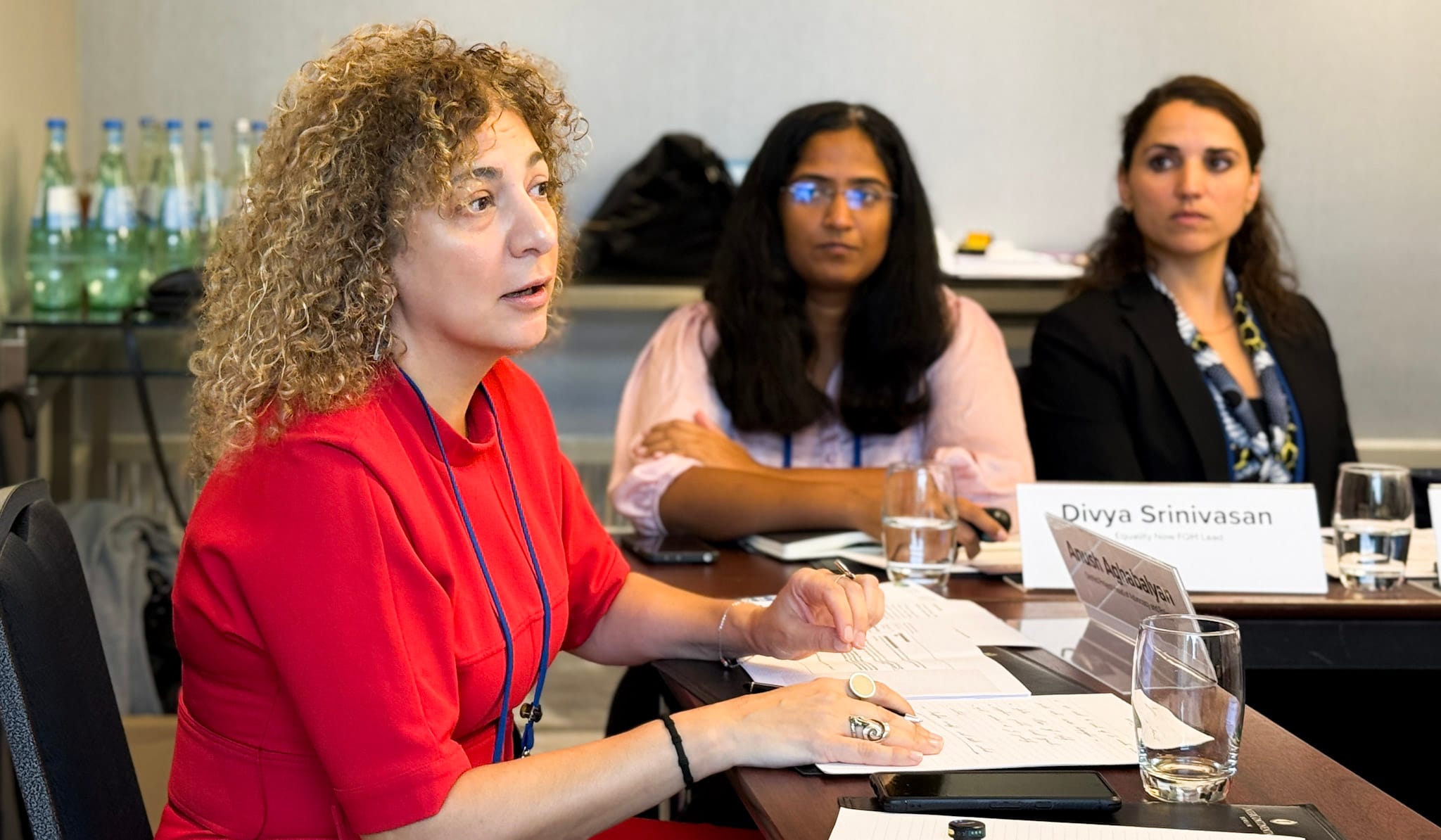Ending FGM/C as a global health emergency: Insights from the World Health Summit – Equality Now

Report on Female Genital Mutilation/Cutting as a Global Health Crisis and Barrier to Sustainable Development
Introduction: Aligning with Sustainable Development Goals
A session at the 2025 World Health Summit, hosted by the Global Platform for Action to End FGM/C and partners including Equality Now and the Orchid Project, has formally positioned Female Genital Mutilation/Cutting (FGM/C) as a global health emergency and a significant impediment to the achievement of the Sustainable Development Goals (SDGs). The practice represents a grave violation of human rights, directly contravening SDG 5 (Gender Equality) and SDG 3 (Good Health and Well-being). Experts and survivors called for coordinated global action to address the practice through a public health and human rights framework.
The Global Scale and Economic Impact of FGM/C
The extensive scale of FGM/C presents a substantial challenge to global development and health systems. The practice’s economic burden further underscores the urgent need for intervention to meet sustainable development targets.
- Prevalence: Over 230 million women and girls worldwide have been subjected to FGM/C.
- Geographic Scope: The practice is documented in at least 94 countries across multiple continents, dispelling misconceptions of it being a regional issue.
- Economic Cost: The annual medical cost associated with treating the consequences of FGM/C is estimated at USD 1.4 billion, a figure projected to rise without accelerated progress.
FGM/C as a Direct Obstacle to SDG 3: Good Health and Well-being
FGM/C inflicts severe, lifelong physical and psychological harm, directly undermining progress towards SDG 3. Recent research has quantified its lethal impact, establishing it as a leading cause of mortality for young women and girls in high-prevalence countries.
- Mortality Rate: New research estimates that FGM/C is responsible for approximately 44,000 deaths annually, equivalent to one death every 12 minutes in the countries studied. This mortality rate surpasses that of many other well-known health threats for this demographic.
- Physical Health Consequences: Immediate and long-term complications include severe bleeding, infection, shock, chronic pain, and obstructed labour, which contributes to maternal mortality, a key indicator for SDG Target 3.1.
- Mental Health Impact: Survivors often experience significant psychological trauma, including post-traumatic stress disorder (PTSD) and a persistent fear of healthcare settings.
The Challenge of Medicalisation and its Violation of Health Ethics
The performance of FGM/C by healthcare professionals, known as medicalisation, is a growing trend that threatens to legitimise the practice and violates fundamental medical ethics. This trend is particularly prominent in parts of Asia, where FGM/C is reportedly normalised and marketed as part of newborn care packages in countries like Indonesia and Malaysia. Dr. Pascale Allotey of the WHO stated that medicalisation “violates the fundamental principle of medicine: do no harm.” This practice undermines the integrity of health systems, a critical component of SDG 3 and SDG 16 (Peace, Justice and Strong Institutions).
Addressing SDG 5: Gender Equality and Eliminating Harmful Practices
FGM/C is a manifestation of deep-rooted gender inequality and constitutes one of the most severe forms of gender-based violence. Its elimination is a specific objective under SDG Target 5.3. Advocates stressed the importance of using precise language, referring to the practice as “mutilation” within institutional contexts to avoid sanitising the violence it represents. Integrating FGM/C into broader discussions on maternal health, mental health, and family planning is essential for a holistic approach to achieving gender equality.
Recommendations and Strategic Actions for Achieving the SDGs
The summit concluded with a consensus on the need for decisive, survivor-centred action to accelerate the abandonment of FGM/C. The following strategic actions were identified as critical for progress:
- Strengthen Legal and Policy Frameworks: Implement and enforce zero-tolerance policies and legal accountability for perpetrators, aligning with SDG 16 to build just and strong institutions.
- Enhance Health Sector Response: Integrate mandatory FGM/C education into all medical and nursing curricula globally to prevent medicalisation and ensure adequate care for survivors, supporting SDG 3 and SDG 4 (Quality Education).
- Increase Financial Investment: Allocate sustained funding for prevention and response programs. Data indicates a significant return on investment, with every euro invested in prevention yielding up to 180 euros in economic benefits.
- Adopt a Feminist Health Approach: Invest in health systems that empower women and girls as agents of change, rather than viewing them as problems to be solved, in line with the principles of SDG 5.
- Amplify Survivor Voices: Ensure that the experiences and leadership of survivors are central to the design and implementation of all policies and programs.
Conclusion: A Call for Global Partnership (SDG 17)
The session underscored that ending FGM/C is an imperative for achieving the 2030 Agenda for Sustainable Development. The collaborative effort of global health bodies, civil society organisations, and survivor networks exemplifies the multi-stakeholder partnerships required under SDG 17. Embedding FGM/C prevention and response into global health policy is not only a matter of human rights but a prerequisite for achieving global health justice, gender equality, and sustainable development for all.
Analysis of SDGs in the Article on Female Genital Mutilation/Cutting
1. Which SDGs are addressed or connected to the issues highlighted in the article?
The article on Female Genital Mutilation/Cutting (FGM/C) as a global health emergency addresses several Sustainable Development Goals (SDGs). The primary connections are:
- SDG 3: Good Health and Well-being: The article frames FGM/C as a “global health emergency” and a “profound health crisis.” It details the severe health consequences, including “severe bleeding, infection, shock, or obstructed labour,” psychological trauma like “post-traumatic stress,” and its role as a leading cause of death, resulting in “approximately 44,000 deaths each year.” The discussion on medicalisation and the need to integrate FGM/C into maternal health, mental health, and medical curricula directly aligns with ensuring healthy lives.
- SDG 5: Gender Equality: The article explicitly identifies FGM/C as “one of the worst forms of gender-based violence” and a “grave violation of human rights.” The entire discussion is centered on a harmful practice that exclusively affects women and girls, reinforcing gender inequality. The call to end FGM/C is presented as “imperative for achieving gender equality and global health justice.”
- SDG 16: Peace, Justice and Strong Institutions: The need for “legal accountability” and “zero-tolerance policies” is a central theme. The article points out institutional weaknesses, such as the fact that “Indonesia is the only country in Asia with a legal provision directly addressing FGM/C,” highlighting the lack of strong legal frameworks to protect women and girls from this form of violence.
- SDG 17: Partnerships for the Goals: The article itself reports on a collaborative session at the World Health Summit hosted by a coalition of organizations, including the “Global Platform for Action to End FGM/C,” “Equality Now,” the “Orchid Project,” the “End FGM European Network,” and “The Girl Generation.” This multi-stakeholder partnership, involving civil society and global health bodies like the WHO, exemplifies the collaborative approach needed to achieve the SDGs.
2. What specific targets under those SDGs can be identified based on the article’s content?
Based on the issues discussed, the following specific SDG targets can be identified:
- Target 5.3: Eliminate all harmful practices, such as child, early and forced marriage and female genital mutilation. This is the most direct and central target, as the entire article is dedicated to the issue of FGM/C and the global effort to end it.
- Target 3.1: By 2030, reduce the global maternal mortality ratio to less than 70 per 100,000 live births. The article connects FGM/C to maternal mortality by stating it can result in death from “obstructed labour” and is a leading cause of death for young women. The call to integrate FGM/C into discussions on “maternal mortality or safe childbirth” reinforces this link.
- Target 3.7: By 2030, ensure universal access to sexual and reproductive health-care services, including for family planning, information and education. The recommendation to integrate FGM/C into discussions on “maternal health, mental health, and family planning” directly supports this target by aiming to make healthcare services more comprehensive and responsive to the needs of survivors.
- Target 16.2: End abuse, exploitation, trafficking and all forms of violence against and torture of children. FGM/C is described as a form of “gender-based violence” and a “mutilation” that is often performed on girls, making its elimination a key component of protecting children from violence.
3. Are there any indicators mentioned or implied in the article that can be used to measure progress towards the identified targets?
Yes, the article mentions or implies several quantitative and qualitative indicators that can be used to measure progress:
- Prevalence of FGM/C (Indicator for Target 5.3): The article provides baseline data on the scale of the problem, stating that FGM/C affects “over 230 million women and girls worldwide” and “80 million women and girls in Asia.” A reduction in these numbers would indicate progress.
- Mortality Rate associated with FGM/C (Indicator for Target 3.1): The article provides a specific mortality figure, estimating that FGM/C causes “approximately 44,000 deaths each year.” Tracking this number would be a direct measure of progress in reducing deaths related to the practice.
- Economic Cost of FGM/C (Indicator for SDG 3): The article quantifies the financial burden, citing an “annual medical cost of USD 1.4 billion.” Reducing this cost would signify a decrease in the health complications requiring medical intervention.
- Prevalence of Medicalisation (Indicator for SDG 3): The article identifies the “performance of FGM/C by healthcare professionals” as a pressing issue. Tracking the percentage of FGM/C cases that are medicalised would be an indicator of whether health systems are successfully implementing “do no harm” principles.
- Existence of Legal Frameworks (Indicator for Targets 5.3 and 16.2): The article implies this indicator by highlighting a major accountability gap, noting that “Indonesia is the only country in Asia with a legal provision directly addressing FGM/C.” An increase in the number of countries with and enforcing such laws would be a key indicator of progress.
4. Table of SDGs, Targets, and Indicators
| SDGs | Targets | Indicators Identified in the Article |
|---|---|---|
| SDG 5: Gender Equality | Target 5.3: Eliminate all harmful practices… and female genital mutilation. |
|
| SDG 3: Good Health and Well-being | Target 3.1: Reduce the global maternal mortality ratio. |
|
| SDG 3: Good Health and Well-being | Target 3.7: Ensure universal access to sexual and reproductive health-care services. |
|
| SDG 16: Peace, Justice and Strong Institutions | Target 16.2: End… all forms of violence against… children. |
|
Source: equalitynow.org
What is Your Reaction?
 Like
0
Like
0
 Dislike
0
Dislike
0
 Love
0
Love
0
 Funny
0
Funny
0
 Angry
0
Angry
0
 Sad
0
Sad
0
 Wow
0
Wow
0


















































.jpg.webp?itok=0ZsAnae9#)



/environment-climate-change-and-health-(ech)/water-sanitation-hygiene-and-health-(wsh)/landfill-tuvalu-36092.tmb-1200v.jpg?sfvrsn=5c21fe40_1#)




















